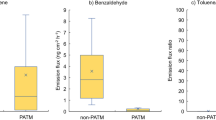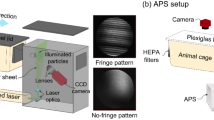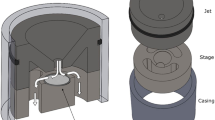Abstract
IN the assessment of airborne particulate contamination, it is necessary to identify and quantify the particle species in the environment. Many of the particles recovered from the air have been identified microscopically as being skin scales shed from humans, similar to those shown in Fig. 1. In some circumstances particles may be recovered which are fragmented and appear “dirty” and their microscopic identification then becomes difficult1. This is especially true when airborne samples from outside air contain small fragments of leaves or the wax cuticle from plant surfaces which are similar in appearance to skin scales.
This is a preview of subscription content, access via your institution
Access options
Subscribe to this journal
Receive 51 print issues and online access
$199.00 per year
only $3.90 per issue
Buy this article
- Purchase on Springer Link
- Instant access to full article PDF
Prices may be subject to local taxes which are calculated during checkout
Similar content being viewed by others
References
Clark, R. P., J. Physiol., 232, No. 1, 5P (1973).
Zelictch, I., in Photosynthesis, Photorespiration and Plant Productivity (Academic Press, 1971).
Wheatley, V. R., The Chemical Composition of Sebum, 90 (Livre Jubilaire 1901–51 de la Société Beige de Dermatologie et de Syphiligraphie, 1952).
Author information
Authors and Affiliations
Rights and permissions
About this article
Cite this article
CLARK, R., SHIRLEY, S. Identification of Skin in Airborne Particulate Matter. Nature 246, 39–40 (1973). https://doi.org/10.1038/246039a0
Received:
Issue Date:
DOI: https://doi.org/10.1038/246039a0
This article is cited by
-
Expiratory aerosol particle escape from surgical masks due to imperfect sealing
Scientific Reports (2021)
-
Exploring the feasibility of bioaerosol analysis as a novel fingerprinting technique
Analytical and Bioanalytical Chemistry (2012)
Comments
By submitting a comment you agree to abide by our Terms and Community Guidelines. If you find something abusive or that does not comply with our terms or guidelines please flag it as inappropriate.



